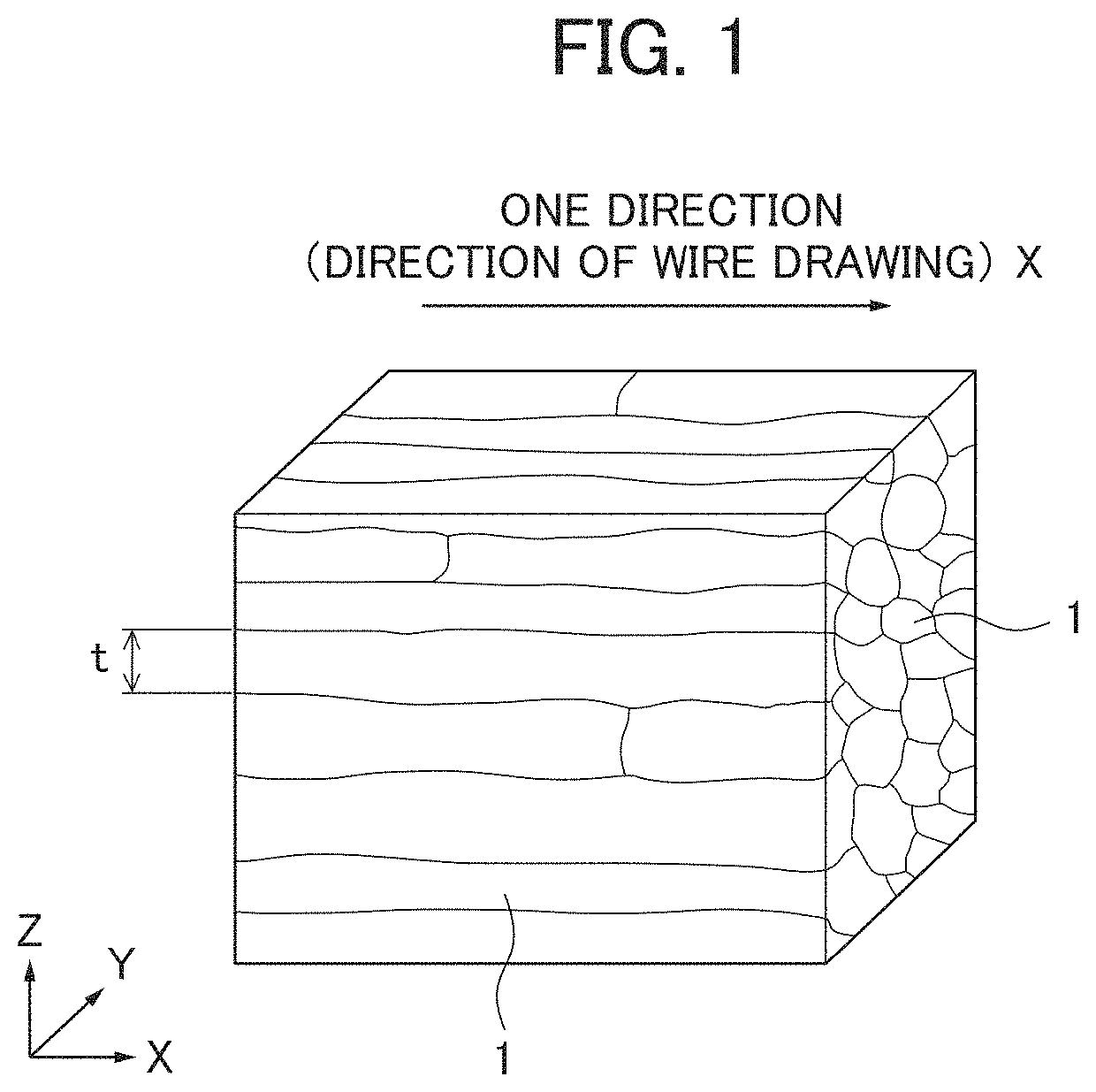Twisted wire conductor for insulated electrical wire, insulated electrical wire, cord and cable
a technology of twisted wire and insulated electrical wire, which is applied in the direction of insulated conductors, cables, cables, etc., can solve the problems of inferior bending fatigue resistance, low strength of materials, and number of repetitions required, and achieve excellent bending fatigue resistance, high strength, and high electrical conductivity.
- Summary
- Abstract
- Description
- Claims
- Application Information
AI Technical Summary
Benefits of technology
Problems solved by technology
Method used
Image
Examples
examples
[0127]Next, in order to further clarify the effects of the present invention, Examples and Comparative Examples will be described; however, the present invention is not intended to be limited to these Examples.
examples 1-1 to 1-30
[0128]First, each of rod materials having a diameter of 10 mmϕ and having the alloy compositions indicated in Table 1 was prepared, and the initial wire diameter was adjusted using each of the rod materials so as to satisfy (the working ratio of) the production conditions and the final element wire diameters described in Table 1. That is, first conductors (specific aluminum alloy wire material) having the wire diameters indicated in Table 1 were produced by adjusting the diameters by die drawing, swaging, rolling, and the like, and then performing annealing. Furthermore, second conductors were produced, according to conventional methods, as various wire materials having the same wire diameters as the first conductors indicated in Table 1 using any metal or alloy selected from the group consisting of copper, copper alloy, aluminum, and aluminum alloy. Then, twisted wire conductors having the twist structure as indicated in Table 1 were produced by twisting together the first conducto...
example 1-1
Conventional Example 1-1
[0138]Conventional Example 1-1 is an example of producing a twisted wire conductor having the same twist structure as that of Example 1-1, except that the twisted wire conductor was constructed only of second conductors formed from a pure copper material (tough pitch copper), without using the first conductor. At this time, the total cross-sectional area S1 of the first conductors was 0% of the nominal cross-sectional area S of the twisted wire conductor.
PUM
| Property | Measurement | Unit |
|---|---|---|
| temperature | aaaaa | aaaaa |
| electric current | aaaaa | aaaaa |
| diameter | aaaaa | aaaaa |
Abstract
Description
Claims
Application Information
 Login to View More
Login to View More - R&D
- Intellectual Property
- Life Sciences
- Materials
- Tech Scout
- Unparalleled Data Quality
- Higher Quality Content
- 60% Fewer Hallucinations
Browse by: Latest US Patents, China's latest patents, Technical Efficacy Thesaurus, Application Domain, Technology Topic, Popular Technical Reports.
© 2025 PatSnap. All rights reserved.Legal|Privacy policy|Modern Slavery Act Transparency Statement|Sitemap|About US| Contact US: help@patsnap.com



